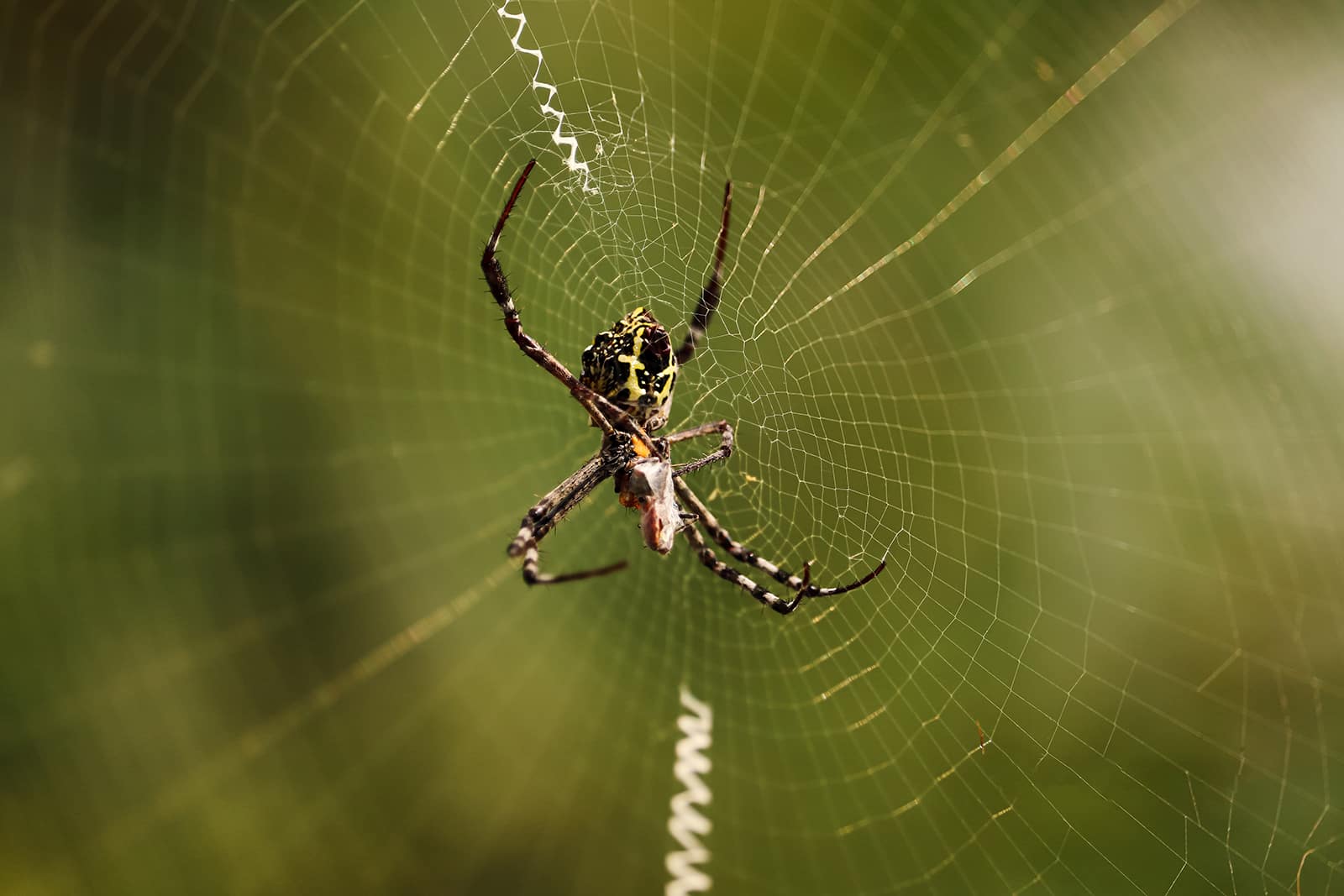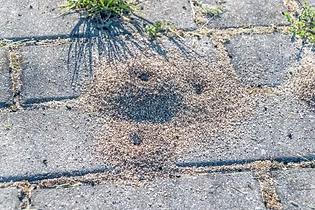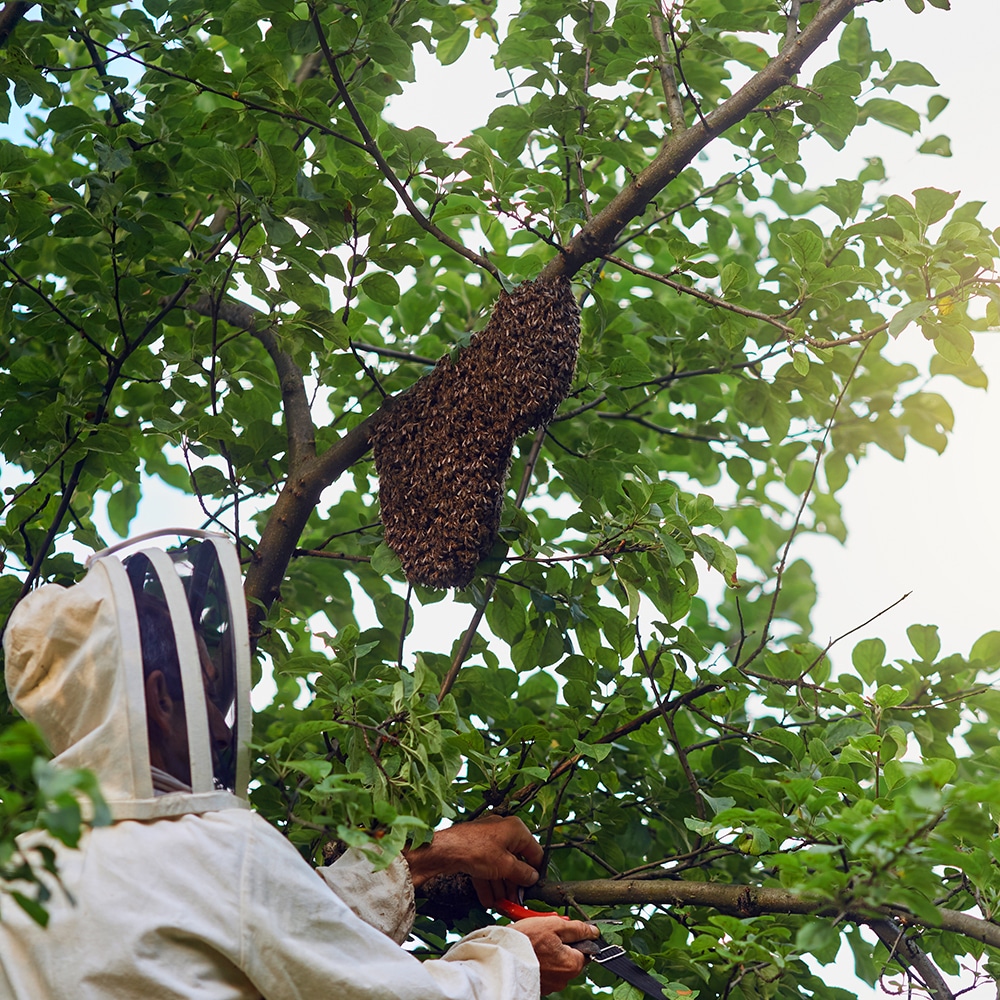
Why Do Spiders Come Back And Why
Why Do Spiders Come Back And Why On The Central Coast NSW. Responsive Proactive Solutions. Detail-focused for lasting results. Call Adam on 0431 222 894
Identifying Common House Insects can be a daunting task, especially on the Central Coast NSW. Whether you’re dealing with ants or cockroaches, knowing the basics can save time and stress. At Vital Pest Control, we’re here to help you with reliable and trustworthy solutions.
Basic Insect Anatomy
Understanding insect anatomy is crucial. Most insects have three main body parts: head, thorax, and abdomen. Recognising these segments helps in Identifying Common House Insects efficiently. Knowing the basics ensures you handle pest issues promptly.
Differentiating Wings vs Wingless
Some insects fly, while others crawl. Identifying if an insect has wings can quickly narrow down possibilities. Winged pests often enter homes through open windows, making screens vital. Wingless pests might indicate cracks needing sealing.
Understanding Antenna Shapes
Antennae come in various shapes. This feature helps in Identifying Common House Insects. Ants have bent antennas, while others might have straight ones. Recognising these shapes aids in pest identification.
Common Body Segments
Insects have distinct body segments. These segments are key in pest identification. Ants, for instance, have a pinched waist. Identifying these features can lead to fast and responsive solutions.
Distinguishing Larvae from Adults
Larvae often look different from adults. Recognising these differences can prevent infestations. For example, caterpillars and moths require different handling. Spotting these early saves time and effort.
Recognising Pest Droppings
Droppings can indicate a pest problem. Different pests leave different droppings. Cockroach droppings are small, similar to coffee grounds. Recognising these can help in Identifying Common House Insects and taking action.
Spotting Eggs or Egg Casings
Eggs or casings might be hidden. Identifying these can prevent future infestations. Bed bugs, for example, lay eggs in mattress seams. Spotting them early ensures quality outcomes.
Using Magnifiers for Better Identification
Magnifiers can reveal hidden details. These tools help in Identifying Common House Insects accurately. Small insects, like fleas, often require magnification. Using these tools can lead to more effective pest control.
Discover how we can help you today! Visit our Contact page for expert advice and solutions.

Understanding basic insect anatomy is crucial for effective pest control, especially in regions like Central Coast NSW where diverse insect species thrive. Recognising key anatomical features helps identify common house insects, aiding in targeted pest control strategies.
Exoskeleton and Body Segments
Insects possess a protective exoskeleton that shields them from environmental hazards. This hard outer layer provides structural support and moisture retention, which is vital for survival. The insect body is divided into three main segments: the head, thorax, and abdomen. These segments are functionally distinct, each housing specific organs and appendages crucial for an insect’s daily activities.
Head and Sensory Organs
The head of an insect is its command centre, hosting critical sensory organs. Eyes, often compound in nature, allow for a wide field of vision, essential for spotting predators or prey. Antennae, attached to the head, serve as vital tools for detecting environmental cues like pheromones or vibrations, guiding insects in their search for food or mates.
Thorax and Locomotion
The thorax is the powerhouse of an insect, providing the base for wings and legs. This segment’s muscles facilitate movement, enabling insects to fly, jump, or crawl. Efficient locomotion aids in escaping predators and accessing food sources, making the thorax a critical component of an insect’s survival toolkit.
Abdomen and Internal Processes
The abdomen houses essential organs for digestion, reproduction, and excretion. This segment’s flexibility allows for expansion and contraction during feeding or oviposition. Understanding the functions of the abdomen helps in identifying feeding habits and reproductive behaviours, which are key for effective pest management.
In the vibrant ecosystem of the Central Coast NSW, identifying house insects is crucial for effective pest control. One key aspect is understanding the difference between winged and wingless insects. This distinction can help in choosing the right pest management strategy, essential for maintaining a comfortable home environment.
Recognising Winged Insects
Winged insects are often more mobile, capable of spreading throughout your home swiftly. These include flying ants and certain beetles. Their ability to fly allows them to exploit various entry points, making them harder to control. Observing their flight patterns and nesting areas can provide vital clues for targeted pest control.
Identifying Wingless Insects
Wingless insects, such as silverfish and bed bugs, rely on crawling to navigate their surroundings. While they lack the mobility of their winged counterparts, they can still infest homes effectively by hiding in small crevices. Spotting them requires a keen eye on places like bedding and behind cupboards where they tend to congregate.
Effective Pest Management
Understanding whether pests are winged or wingless aids in selecting appropriate control methods. For winged insects, sealing entry points and using traps or insecticides can be effective. For wingless pests, focusing on sanitation and targeted treatments in their specific hiding spots is crucial. This nuanced approach ensures comprehensive pest management, safeguarding your home on the Central Coast.
Understanding the shapes of antennae can be crucial for identifying pests on the Central Coast of NSW. These tiny structures vary widely among insect species and can provide significant clues about their behaviour, habitat, and the level of infestation risk they pose to homes. Recognising these differences can aid in effective pest control strategies, ensuring homes remain protected from unwanted invaders.
Filiform Antennae: The Basic Form
Filiform antennae are thin and thread-like. Common in beetles and cockroaches, these antennae help them sense their environment. Their uniform shape makes them efficient in detecting chemical signals, which is crucial for survival and navigation. Identifying insects with filiform antennae can indicate the presence of species that thrive in dark, damp areas like basements and kitchens.
Clubbed Antennae: A Sign of Trouble
Clubbed or clavate antennae end in a distinct bulge. These are often seen in beetles such as weevils. The enlarged tips enhance their ability to smell, which helps them locate food sources. Identifying pests with clubbed antennae can suggest a potential infestation of pantry goods or stored products, necessitating prompt action.
Feathered Antennae: The Intricate Design
Moths often display feathered or plumose antennae, which resemble delicate feathers. These structures are highly sensitive to pheromones, aiding in mating processes. Spotting insects with feathered antennae can alert homeowners to breeding cycles that might increase pest populations, leading to larger infestations if not controlled.
Understanding the common body segments of pests can help in their identification and control, especially on the Central Coast of NSW, where pest management is crucial. Recognising these segments aids in differentiating between various insects that might invade homes, helping you take timely action for vital pest control.
Head Segment
The head of an insect typically houses its sensory and feeding appendages. On the Central Coast, ants and cockroaches are common pests with distinct head features. Ants have elbowed antennae and strong mandibles for food collection, while cockroaches have long, flexible antennae used for navigation in dark areas. Recognising these features can assist in identifying the pest.
Thorax Segment
The thorax is the central body part where legs and wings attach. Insects like flies and wasps on the Central Coast have well-developed thoraxes supporting swift movement or flight. The thorax muscle structure varies, influencing the pest’s behaviour and potential threat level. Understanding these differences aids in selecting appropriate control methods.
Abdomen Segment
The abdomen contains vital systems like digestion and reproduction. Spiders, although not insects, have distinct abdomens that can help in quick identification. On the Central Coast, identifying spiders by their body segment proportions can inform the urgency of pest control measures due to potential venomous bites.
Understanding the difference between larvae and adult insects is crucial for effective pest control, especially on the Central Coast of NSW. Recognising these differences helps in identifying common household pests early, ensuring prompt and appropriate intervention.
Recognising Larvae Characteristics
Larvae often resemble small worms, lacking the distinct features of their adult counterparts. They usually have soft bodies and can vary in colour from white to brown. Some larvae, like those of beetles or moths, possess tiny legs, while others, such as maggots, do not. Identifying these traits aids in determining the type of insect you are dealing with, which is essential for selecting the right pest control method.
Features of Adult Insects
Adult insects are more defined, with features specific to their species, like wings, antennae, and segmented bodies. They are often more mobile, making them easier to spot than larvae. On the Central Coast, common adult insects include cockroaches, ants, and flies. Spotting an adult can provide vital clues about the breeding site and the extent of the infestation, helping in planning a targeted pest control strategy.
Effective pest control starts with correct identification. Knowing whether you are dealing with larvae or adults allows for a more tailored approach, potentially saving time and resources in managing household insects.
Recognising pest droppings is crucial for effective pest control on the Central Coast, NSW. Identifying these signs early can prevent infestations, saving both time and money. Pest droppings vary in size, shape, and colour, depending on the type of insect or rodent. Knowing what to look for helps in taking swift action.
Identifying Cockroach Droppings
Cockroach droppings resemble small, black pepper specks or ground coffee. These droppings are often found in kitchen cabinets, under sinks, and in dark corners. Spotting these signs indicates a cockroach presence that needs addressing quickly to avoid a larger infestation.
Recognising Mouse and Rat Pellets
Mouse and rat droppings differ in size; mouse pellets are small and rice-shaped, while rat droppings are larger and more cylindrical. These are typically found near food sources or nesting areas. Their presence signals a need for immediate pest control measures.
Termite Frass Indicators
Termite droppings, or frass, appear as small, wood-coloured pellets. Often found near wooden structures, frass signals active termites. It’s crucial to address termite problems promptly to prevent structural damage.
Ant Droppings Clues
Ant droppings look like tiny black dots, similar to grains of sand, often located near food sources or along ant trails. Although less harmful, ants can contaminate food, making it important to handle them efficiently.
Spotting eggs or egg casings is crucial for effective pest control on the Central Coast of NSW. Identifying these signs early can help prevent infestations from spiralling out of control. By understanding where to look and what to look for, homeowners can take proactive steps in managing pest issues.
Common Locations for Egg Deposits
Insects often lay eggs in hidden or undisturbed areas. Kitchens, bathrooms, and basements are prime spots. Check under sinks, around baseboards, and in dark corners. Storage areas, especially those with cardboard boxes or old fabrics, can also harbour eggs. Vigilance in these areas can lead to early detection and control.
Recognising Egg Casings
Egg casings vary widely depending on the insect species. Cockroach eggs appear as small, brown capsules. On the other hand, moths lay tiny, white clusters. Knowing these differences helps in identifying the pest type, allowing for targeted control measures. Regular inspections can prevent these pests from multiplying.
Importance of Early Detection
Early detection of eggs or egg casings is vital in pest management. It allows for immediate action, reducing the risk of a full-blown infestation. By understanding the breeding habits of common pests, homeowners can implement effective measures. This proactive approach can save time and resources in the long run.
Using magnifiers can significantly enhance your ability to identify pests effectively, especially in regions like the Central Coast of NSW. Many pests are small and can be difficult to spot with the naked eye, making magnifiers an essential tool for accurate identification.
Enhanced Visual Precision
Magnifiers provide a closer look at the intricate details of pests, such as body segments, antennae, and legs. These features are crucial for distinguishing between similar-looking insects. For instance, distinguishing between species of ants or differentiating beetles becomes much easier with magnified views.
Identifying Damage Patterns
Besides examining the pests themselves, magnifiers help in identifying the patterns of damage they cause. Whether it’s tiny gnaw marks on wooden furniture or holes in fabrics, observing these details closely can lead to more accurate pest identification and control strategies.
Supporting Pest Control Efforts
For pest control services on the Central Coast, using magnifiers can inform better treatment plans. By accurately identifying pests, professionals can choose the most effective methods and products. This not only ensures successful eradication but also prevents recurrence.
Embracing tools like magnifiers in pest identification enhances the effectiveness of pest control measures, ensuring healthier homes and environments in the Central Coast region.
Understanding the signs of feeding damage is crucial for effective pest control on the Central Coast of NSW. Many homeowners struggle with identifying these signs, which can result in prolonged infestations. By learning what to look for, you can take timely action and protect your home from pests.
Chewed Leaves and Stems
One common sign of insect activity is chewed leaves and stems in your garden. Caterpillars and beetles often leave ragged edges or holes in foliage, which can stunt plant growth. By inspecting your plants regularly, you can catch these pests early and prevent further damage.
Gnaw Marks in Wood
Rodents and termites are notorious for gnawing on wood. Look for small, rough marks on wooden structures like fences and furniture. These pests can weaken your home’s structural integrity over time, making early detection and pest control vital for preservation.
Holes in Fabrics
Moths and beetles often target fabrics, leaving small holes in clothing, carpets, and upholstery. If you notice such damage, it may signal an infestation. Regularly checking your fabrics can help you take swift action against these destructive insects.
Frass and Droppings
Frass, or insect droppings, often appears as small, powdery debris near infested areas. These droppings can indicate the presence of wood-boring insects or rodents. Spotting frass early helps in targeting the problem areas effectively, ensuring better pest management.
Understanding colour patterns is vital for effective pest control on the Central Coast of NSW. Identifying these patterns not only helps in recognising common house insects but also aids in selecting the right control measures. As many pests exhibit distinctive colouration, knowing what to look for can streamline pest management efforts.
Recognising Ant Trails
Ants on the Central Coast often form visible trails due to their dark bodies against lighter surfaces. These trails are typically seen in kitchens and bathrooms. Watching for these dark lines can help identify entry points. By targeting these entries with bait stations, homeowners can effectively disrupt ant activity.
Spotting Cockroach Hues
Cockroaches generally have a brown or black sheen that makes them noticeable in bright light. Their colour can vary slightly depending on the species, but the glossy appearance is a common trait. Spotting these pests often requires checking under sinks and in dark corners where they hide during the day. Addressing these areas with traps can reduce infestations.
Identifying Spider Markings
Spiders showcase varied colour patterns, from the distinctive redback to light brown huntsmen. Recognising these markings can prevent panic and allow for proper intervention. While some spiders pose no threat, others may require professional removal. Understanding these patterns ensures the right approach to pest control.
On the Central Coast of NSW, pest control is essential for maintaining a healthy home. One key aspect often overlooked is checking for webbing. Webbing indicates the presence of pests like spiders or moths, which can disrupt your peace and damage belongings. By identifying and addressing webbing early, you can maintain a pest-free environment.
Identifying Webbing Patterns
Webbing patterns vary among pests. Spiders tend to create intricate webs in corners or ceiling edges, while moths may weave more subtle, loose webbing in dark spaces like wardrobes. Observing these patterns helps in determining the type of pest you are dealing with, enabling targeted pest control methods.
Common Webbing Locations
Webbing is commonly found in less disturbed areas. Check basements, attics, and under furniture. In the Central Coast’s humid climate, these areas can become hotspots for pest activity. Regular inspections ensure early detection, preventing larger infestations. This proactive approach saves time and resources in the long run.
Effective Webbing Removal
Once webbing is spotted, prompt removal is crucial. Use a vacuum cleaner or a damp cloth to remove webs effectively. This process not only cleans the area but also disrupts the pest’s habitat. Regular cleaning reduces the likelihood of pests returning, keeping your home safe and comfortable.
Understanding smell or odour clues can be a game changer when it comes to vital pest control on the Central Coast, NSW. Many household insects emit distinct scents, which can be the first sign of an infestation. By recognising these odours, homeowners can take swift action to protect their homes from damage and health risks.
Musty Odours and Cockroaches
Cockroaches often produce a musty smell, especially when their numbers increase. This odour, caused by chemicals they release, can linger in kitchens and bathrooms. It’s crucial to act quickly, as cockroaches spread disease and trigger allergies. Regular cleaning and proper food storage can help, but professional pest control may be necessary for severe infestations.
Sweet Scents and Ants
Ants can leave behind a sweet smell, particularly when crushed. This odour is often noticed near food sources, as ants are attracted to sugars and other food residues. Keeping surfaces clean and sealing food containers can deter ants. However, persistent issues may require expert pest control services to eliminate nests and prevent recurrence.
Foul Smells and Rodents
Rodents, while not insects, are common household pests that emit a strong, unpleasant smell. This odour comes from their urine and droppings and can signal a significant infestation. Aside from the smell, rodents pose serious health risks through contamination. Prompt pest control intervention is critical to remove rodents and restore a safe living environment.
As the sun sets on the Central Coast of NSW, certain insects become more active, slipping from their hiding spots to forage and explore. This nocturnal behaviour poses challenges for Vital Pest Control, as these pests are often unseen during the day. Understanding their night-time habits is key to effective management.
Night-time Activity of Cockroaches
Cockroaches are notorious for their night-time escapades. These resilient insects scuttle in search of food and water, often invading kitchens and bathrooms. They prefer darkness, making night the prime time for their activity. Their presence can be a sign of larger infestations, urging prompt action from pest control experts.
Rodent Movements Under Cover of Darkness
Rats and mice are adept at using the cover of night to move undetected. They scurry along walls and under furniture, seeking food and shelter. Their nocturnal habits often leave signs like droppings or gnaw marks by morning. Identifying these signs can help manage infestations effectively.
Bed Bugs: Night-time Feeders
Bed bugs emerge after dusk to feed on unsuspecting hosts. Their bites often go unnoticed until morning, leaving itchy welts. These pests are difficult to spot, as they hide in crevices during the day. Effective pest control requires identifying their patterns and treating affected areas thoroughly.
Vital Pest Control leverages knowledge of these night-time behaviours to implement strategic interventions, ensuring homes remain pest-free. Addressing infestations promptly not only maintains comfort but also protects health.
Seasonal fluctuations have a significant impact on pest control needs on the Central Coast, NSW. Understanding these changes is crucial for effective pest management strategies. As temperatures change and weather patterns shift, different insects become more prevalent, affecting homes and businesses in various ways.
Summer Influx
During the summer months, the Central Coast experiences a surge in mosquito and ant populations. The warm, humid conditions create ideal breeding environments for these pests. Mosquitoes become active as they seek out standing water for breeding, while ants infiltrate homes in search of food. Homeowners often require targeted pest control measures to address these nuisances.
Autumn Changes
As autumn arrives, spiders and rodents become more visible. Cooler temperatures drive these pests indoors seeking warmth and shelter. Spiders spin webs in corners and crevices, while rodents look for nesting sites in attics and basements. Effective pest control during this season focuses on sealing entry points and regular inspections.
Winter Retreat
In winter, pest activity typically slows down. However, cockroaches and rodents can still pose a problem as they seek warmth inside homes. It’s essential to maintain vigilance by keeping spaces clean and clutter-free, reducing the likelihood of infestations during the colder months.
Spring Awakening
Spring heralds a rise in pest activity once more, with termites and wasps becoming particularly active. This season is crucial for preventative pest control measures, including termite inspections and wasp nest removals, to prevent damage and ensure a pest-free environment.
Keeping an insect identification log is essential for effective pest control on the Central Coast, NSW. Documenting insect encounters provides insights into infestation patterns, helping homeowners and pest control professionals develop targeted strategies. Understanding which insects are present aids in choosing the most appropriate treatment methods, ensuring long-term pest management success.
Understanding Insect Habitats
Recording where insects appear in your home helps identify high-risk areas. Kitchens and bathrooms often attract pests due to moisture and food sources. Note these locations in your log to focus pest control efforts where they are most needed. Recognising patterns in insect habitats assists in preventing future infestations by addressing environmental factors.
Tracking Seasonal Trends
Insects often follow seasonal patterns. Logging sightings over time can reveal when certain pests are most active. This information is crucial for scheduling preventive measures effectively. For example, if cockroaches peak in summer months, pre-emptive treatments can be planned accordingly, reducing potential infestations.
Identifying Insect Species
Accurate species identification is key to effective pest control. An insect identification log should include descriptions or photos to help distinguish between similar-looking insects. This ensures that the correct extermination methods are used, avoiding unnecessary treatments and focusing on those that target specific pests.
Please leave your details in the form and we will call you back the same day.
So that we can process your enquire efficiently please leave as many details as possible and upload any relevant images. (.jpg and .png format)

Why Do Spiders Come Back And Why On The Central Coast NSW. Responsive Proactive Solutions. Detail-focused for lasting results. Call Adam on 0431 222 894

Building a Long Term Residential Pest Protection Plan For Home Owners On The Central Coast NSW. Responsive Proactive Solutions. Detail-focused for lasting results. Call Adam on 0431 222 894

How to Protect Your Home from Wasp Infestations On The Central Coast NSW. Responsive Proactive Solutions. Detail-focused for lasting results. Call Adam on 0431 222 894